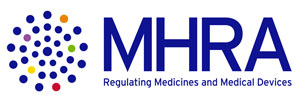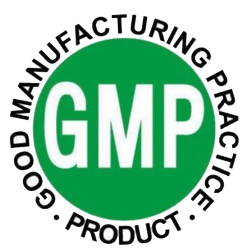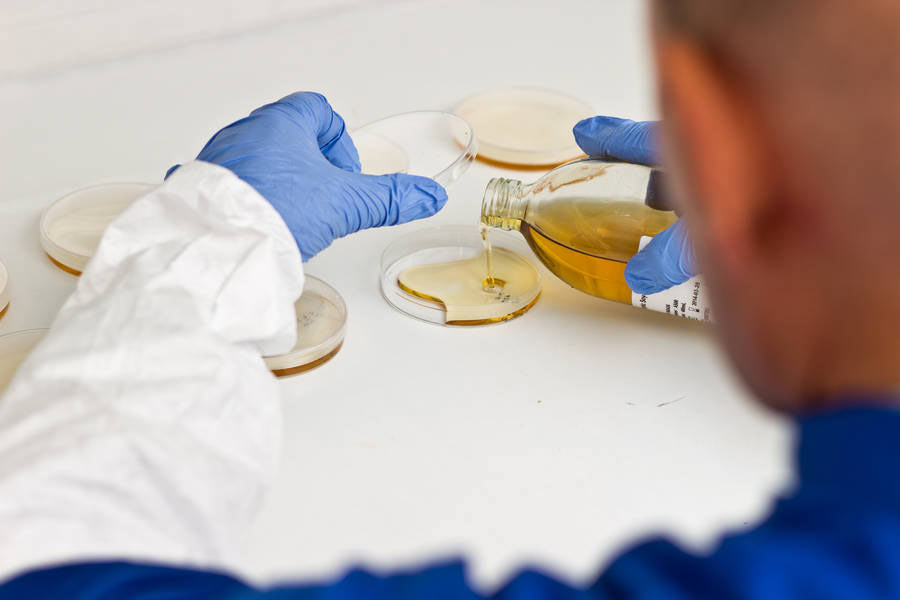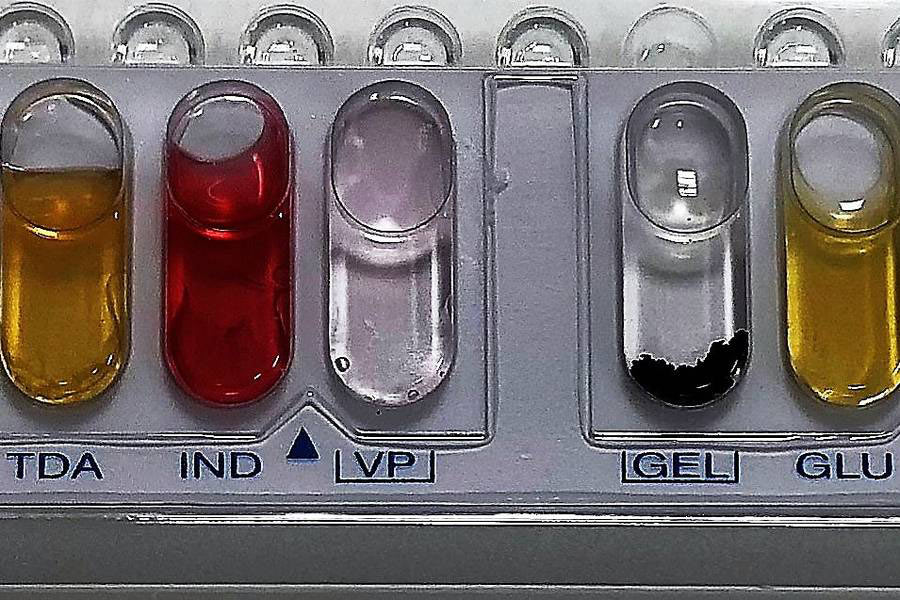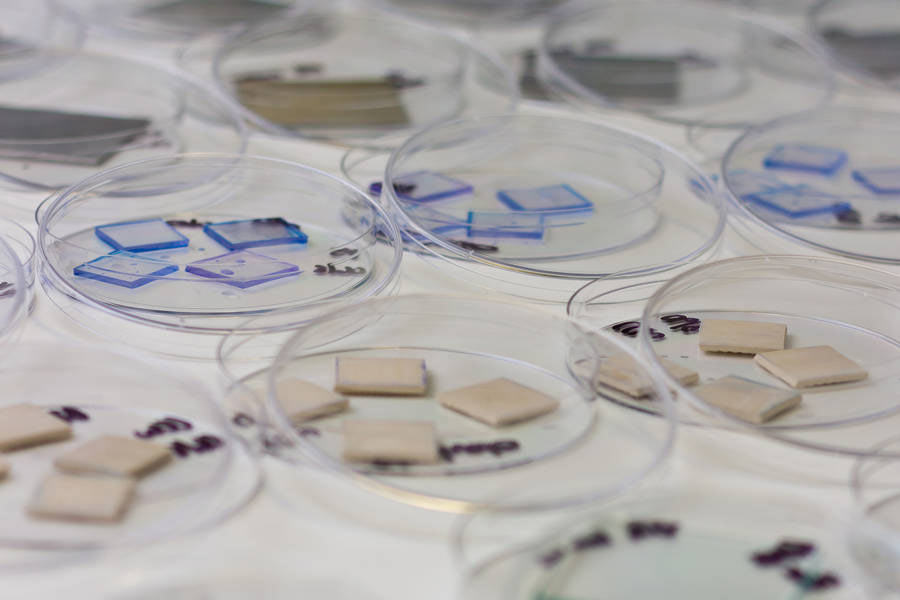Methods of preparation of sterile products and biological indicators.
Introduction
Over recent years the pharmaceutical industry has seen significant changes to the way that it operates due to the increasing introduction of new technology, more focus on the application of science and more reliance on statistical methods to demonstrate confidence in process control. To enable this transition, many of the regulations and guidelines within the industry have been significantly revised to reflect the change in emphasis. In the field of sterilisation, this has resulted in the USP completely rewriting the text on sterilisation processes and biological indicators with the creation of USP chapter <1229> Sterilisation of Compendial Articles. This phased implementation started in 2013 and is still ongoing with new chapters being introduced in USP40. In Europe the General Chapters concerning Sterilisation 5.1.1 Methods of Preparation of Sterile Products and 5.1.2 Biological Indicators for Sterilisation started the revision process in 2009 and had several draft versions issued before the final text entered Ph.Eur 9.2 in July 2017.
Within the pharmacopeia’s it has long been accepted that for terminally sterilised product the minimum sterility assurance level to achieve is an SAL of 10-6. However, historically there have been significant differences between the methods of demonstrating sterilisation processes are effective between the USP and Ph.Eur.
Europe has placed much more reliance on the achievement of physical parameters whilst the U.S. has placed more focus on demonstrating sterility assurance through the use of biological indicators.
These differences in approach are reflected in the requirements within the pharmacopeia’s with Ph.Eur Chapter 5.1.11 making reference to a standard cycle where aqueous products are heated for 15 minutes at 121°C. The requirements for the use of biological indicators was ambiguous in the 01/2008 text, with the statement “where a biological assessment is carried out this is obtained using a suitable biological indicator” 1. This statement appears to make the use of biological indicators optional, however it must be noted that the standard reference cycle will deliver a high level of lethality to the process and for that reason is intrinsically safe. Under these conditions it could be argued that the need for the use of biological indicators is questionable. The easiest way to demonstrate a sterility assurance level for the product is through the use of biological indicators by relating the log reduction value achieved for the biological indicator to a worst case assumption of bioburden for the product or through actual monitoring of pre-sterilisation bioburden.
Clarification on the Ph.Eur requirements for Sterilisation and biological indicators has long been overdue and this article aims to highlight the significant changes in the text for the 2017 revisions.
In the field of sterilisation this has resulted in the USP completely rewriting the text on sterilisation processes and biological indicators with the creation of USP chapter <1229> Sterilisation of Compendial Articles.
Chapter 5.1.1 Methods of Preparation of Sterile Products
This chapter has been completely rewritten and provides more structure and clarification to specific requirements, which was lacking from the previous version 01/2008 1. The key requirement for sterility assurance remain unchanged with an SAL of 10-6 required to be demonstrated for products sterilised by moist and dry heat processes.
In terms of sterility assurance, the new 2017 revision reconfirms that sterilisation process conditions are chosen to provide the highest level of sterility assurance compatible with the drug product and where ever possible terminal sterilisation is chosen. Further clarification is provided for products which are manufactured through aseptic manufacture or sterile filtration in that where ever possible an appropriate additional treatment (e.g. heating) in its final container is applied.
This is a major change to the text and makes it clear that companies must explore ways to provide the highest sterility assurance level possible especially for aseptically manufactured products which could withstand a heat treatment step. In a well-controlled aseptic manufacturing process using sterile filtration the greatest risk of contamination will be through vegatative microbiological contaminants originating from operators, which have a very limited resistance to moist heat, so a heat treatment step using moist heat at 100°C for 5 minutes could be a very effective risk reduction step post fill.
The revised text also highlights the need to understand the product bioburden through microbiological monitoring and also assess the effect that the product can have on the bioburden in terms of population and resistance. Manufacturers should consider factors like water activity (Aw) in the product, the presence of antibiotic compounds and pH. If the product increases the resistance of micro-organisms to the sterilisation process then these factors need to be taken into consideration during the design and Qualification of the Sterilisation Process.
Steam Sterilisation
The text for steam sterilisation has been completely rewritten and the use of standard subsections provides a more comprehensive text. The major points are summarised below:
- There is now a clear distinction between direct steam processes (porous Loads) and closed container sterilisation
- For Direct Steam processes it is essential that items are free from air and non-condensable gases
- Where air is removed by vacuum from the chamber ensure that items are not affected by the vacuum process
- The standard reference cycle for steam sterilisation is 15 minutes at 121°C
- The minimum temperature for steam sterilisation is 110°C
- The minimum Fo calculated in the slowest to heat position of the load is not less than 8Fo
- New requirements for the correlation of (Fphys) and (Fbio) for the process
In the revised Chapter 5.1.1 the European approach is still to rely on the use of physical parameters to ensure sterility assurance level, with reference to the standard cycle at 15 minutes at 121°C. However because terminal sterilisation provides such a greater level of sterility assurance than aseptic processing, product specific sterilisation processes using a reduced total heat input (8 Fo) are permitted if the standard cycle is not compatible with the product. The minimum temperature for moist steam sterilisation has been defined as 110°C and under these conditions product bioburden would need to be well controlled and characterised.
A major change here is that ‘calculated effectiveness from physical parameters F(Phys) is correlated with biological effectiveness (Fbio)’ 3
It is clear that the use of biological indicators is now required to calculate the effectiveness of the process. The sterilisation exposure phase for the cycle must be set to achieve the required log reduction for the cycle and this must be demonstrated through the use of an appropriate biological indicator located in the most difficult to sterilise locations during validation studies.
Dry Heat Sterilisation
The section for Dry heat remains relatively unchanged with the reference to the standard sterilisation cycle of 160°C for 2hrs. For depyrogenation dry heat temperatures of 220°C for a validated time are required.
During validation of depyrogenation processes demonstration of a 3 log reduction in endotoxin can be used as a validation criteria. In these circumstances biological indicators will not be required.
Ionising Radiation
The most significant change in this section is that biological indictors are not required during qualification but may be used for the development of some specific applications for example tissues and cell products
Gas Sterilisation (Vapour Phase Sterilisation)
This section has been revised to include surface sterilisation by alkylating agents (e.g. ETO) and Oxidising agents (e.g. hydrogen peroxide). The basic phases of a typical cycle are described (pre conditioning, sterilisation and aeration).
Filtration Processes
Much of this section remains unchanged with additional clarification around bioburden control in that pre-sterilisation bioburden is determined for each batch of product.
Fbio is calculated as follows: Fbio = D121
(log10 No – log10 N)
Where No is the number of viable organisms in the Biological indicator before exposure
And N is number of viable organisms after exposure
It is clear that the use of biological indicators is now required to calculate the effectiveness of the sterilisation process.
Methods of preparation of sterile products and biological indicators.
5.1.2 Biological Indicators and Related Preparations related to Microbial Preparations used in the Manufacture of Sterile Products
There are a number of significant changes to this chapter (including the title) regarding the use and application of biological indicators, particularly for the validation of moist heat and dry heat sterilisation processes. The first major change is the clarification that this chapter is intended to cover sterilisation of finished products and also relevant related processes, i.e. sterilisation of items coming into contact with final sterilised product, for example sterilised porous load items.
The second major change is the end point for the process. Where the previous edition stated the complete kill of biological indicator, the 2017 edition now requires confirmation of both the validity of the sterilisation process and the validity of the biological indicators. This shall be achieved by the use of reduced sterilisation process conditions, whereby a small proportion of the micro-organism within the biological indicator will be shown to survive.
At first glance this statement appears to be a big departure from the old approach where any surviving biological indicator after exposure to the process would be a failure. However the text provides further detail and rationale behind why this change has been made.
Quality Aspects
In the following section a summary of the major changes is provided with discussion on specific points
- The user must establish a high degree of confidence in the manufacturers compliance to quality standards (e.g. by auditing) in order to rely on the characteristics stated by the manufacturer.
- Alternatively the labelled characteristics can be verified by the user or by an independent approved contract laboratory.
- For custom made BI’s the characteristics shall be verified by the user or a contract laboratory
- The D value per batch of finished Biological Indicator throughout the labelled shelf life shall be known
- The different types of commercially available biological indicator are referenced (inoculated carrier, self contained Biological Indicators and characterised spore suspensions) as well as custom made Biological Indicators Where the previous edition stated the complete kill of biological indicator, the 2017 edition now requires confirmation of both the validity of the sterilisation process and the validity of the biological indicators.
The above requirements are centred on quality control to ensure that when a biological indicator is selected and used to monitor the biological effectiveness of the process that meaningful data is achieved.
To illustrate this, an example where a customer had chosen to stop performing independent D value analysis of their biological indicators for a moist heat application is provided below;
The sterilisation process had been qualified a number of years earlier and there had been no significant changes to the process in recent years, except for choosing to stop performing independent D value analysis of each batch of biological indicator. During the most recent qualification exercise the customer was surprised to find a number of Biological indicator positive growths from the Biological Indicators with a labelled D value of 1.8 minutes, even though they were positioned within the load in locations which achieved >20 minutes at 122°C.
It would appear highly unlikely that in this situation, the Fphys and Fbio were correlated, but as the D Value of the BI was no longer verified, this would be a variable which could not be confirmed.
The investigation concluded that there was no laboratory error, but that the root cause was not determined and to prevent reoccurrence the sterilisation exposure time was doubled from 20 minutes to 40 minutes. Clearly this course of action would not be possible for a heat labile product, so D value verification is often a key step in the BI selection process.
URS for Biological Indicators
The next major change is that the user must now prepare a URS for the choice of biological indicators for
the specific sterilisation process.
This is a big departure from the previous text where biological indicator population, D value and test organism were defined with little flexibility and should be welcomed by the sterilisation community.
THE URS SHOULD INCLUDE:-
Figure 1 Biological indicator Examples
Establishment of Validation Cycle
There has been a complete change in approach to the use of biological indicators to verify process effectiveness. The emphasis is now being placed on verifying both the validity of the biological indicator and the validity of the sterilisation process.
Many sterilisation processes have been set up as highly effective processes which has resulted in cycles which have considerable overkill. It is not uncommon to see direct steam sterilisation cycles with exposure times of 30 minutes at 121°C. Most commercially available biological indicators are manufactured with D values between 1.5 and 2.5 and it is therefore highly unlikely that if these BI’s were used in the worst case locations, within the load and a minimum F(phys) of 30 was achieved in all locations, that any survivors would ever be detected.
In fact through the use of simple statistics the user could calculate the survivor rate for the BI within a defined sterilisation process and this is what the revised chapter calls the user to establish.
The revised Chapter is now stating that when challenging the process where the kill time for the BI is exceeded by a wide margin this is a meaningless biological challenge because the BI would never detect a process change or suboptimal conditions when used on a cycle with such a high level of ethality.
The revision now requires the use of a Biological challenge using reduced validation parameters where the sterilisation parameters are reduced so that the survivor rate is between 1 in 10 to 1 in 1000.
Under these conditions a survivor rate of not more than 1 in 10 could be accepted provided that a 6 log reduction was demonstrated when a full sterilisation was performed. The reduced parameters could be either time or temperature or both.
The revised text includes equations to calculate survival time and kill times for the biological indicators.
These equations correspond with USP and ISO 11138.
An equation to calculate the exposure time to be used during validation or the selected biological indicator based on the population and D-value Tval
is provided where the expected survivor rate shall be between 10-1 and 10-3.
ts = Survival Time
Equation 1 ts = D x (log10No – 2)
tk = Kill time
Equation 2 tk = D x (log10No + 4)
Equation 3 D x (log10No + 1) ≤ tvl ≤ D x (log10No +3)
The emphasis is now being placed on verifying both the validity of the biological indicator and the validity of the sterilisation process.
The revised requirements states that “a decision not to perform this test must be justified” 4. For clarification this is in reference to the validation test running at reduced parameters. The text also states that ”Following a full sterilisation cycle all biological indicators in a validation study must be inactivated, thereby proving at least a 106 reduction in micro-organisms.” 4
These requirements appear at first glance to take the European approach back to full and half cycle validation, however there is a more scientific reasoning behind the need for reduced cycles now.
An example will be provided to illustrate how this approach can be put into practice.
Biological Indicators for Moist Heat
When a comparison is made between previous requirements for biological indicators (Figure 1) and the new requirements it becomes apparent that the URS will drive the selection process.
Table 1 Summary of Ph.Eur Biological Indicator Requirements for Moist Heat
Test Organism and Population
When a comparison is made in Table 1 it becomes evident that there has been a significant change in the Ph.Eur requirements for biological indicators for moist heat sterilisation. Pre 2017 the test organism (G.stearothermophilus) of the BI and the minimum spore population was specified as > 105, however the test organism or minimum population has not been specified in the revised text.
This is to allow for the user to decide the most appropriate test organism and population to use during validation tests as there may be some situations where an SAL of 10-6 could be demonstrated through the
use of a lower BI concentration. The revised text provides an example of such situations ‘it is recognised that a 105 or 106 population of G. Stearothermophilus may not be suitable for a sterilisation process delivering Fo between 8 and 15, therefore a lower spore number (i.e. 103 or 104 ) or a different test organism may be used’. 4
Another example of where using a BI with a lower spore population or different test organism may be appropriate could be the stopper vial interface in a terminally sterilised product. This has been highlighted as an example worst case location.
D Value
The requirements for D value have also changed with no minimum D value defined; instead typical D values are quoted. The key is that the D value of the test organism is high in relation to the actual D value of any contaminating environmental isolates on or in the product and the revised text again allows greater flexibility in choice of D value. It should be noted that most biological indicator manufacturers produce biological indicators with a minimum D value of 1.5 minutes, so it may take time before BI’s with lower D values become commercially available.
Verification
The need to perform a sub lethal cycle on each batch of biological indiocator has been removed. However with the requirement that the sterilisation parameters are reduced during validation activities to a time where there is a statsitcal probability of BI survivors between 1 in 10 and 1 in 1000, verifying the labelled D value will be more important, as an unexpectedly high number of survivors (>1 in 10) during the reduced cycle may trigger a process investigation into the result.
Example Biological Requalification Process
This example has been designed to illustrate a possible way to comply with the revised requirements for selecting biological indicators and use during a requalification activity.
A manufacturer has a direct steam sterilisation process which sterilises product contact parts for use in an aseptic filling operation at 121°C for 30 minutes. The process has been qualified using commercially available spore strips and is in production. The process is due for requalification and has previously been qualified using commercially available spore strips of Geobacillus Stearothermophils with a minimum
population of 1 x106 and Minimum D value of 1.5 minutes. The requalification process involves performing 1 run at 30 minutes and a complete kill of the biological indicators is required.
For the requalification exercise the company needs to reorder a biological indicator suitable for the Sterilisation process and to comply with the requirements of the Ph.Eur.
The manufacturer has prepared a URS for a suitable biological indicator for the process and needs to order a new batch of biological indicators. The manufacturer has defined a minimum population and maximum D121 value which will be suitable for the process and specified that the D121 value of the BI must be between 2.0 and 2.5 (refer to Table 2)
The biological indicator manufacturer supplies a BI with a D-value of 2.0 minutes
The biological indicator D value is independently verified and found to be within 20% of the labelled claim. The biological indicator can now be used.
During the requalification phase the sterilisation exposure time is reduced down to a time point where an expected BI survivor rate is between 1in 1000 (TV3) which is 18 minutes (refer to table 1). The manufacturer runs the requalification cycle with Biological indicators and thermocouples located in the worst case locations within the load and all Biological indicators show no growth upon incubation and all thermocouple locations achieve > 121°C for 18 minutes.
The Ph.Eur requires that a full sterilisation cycle is required to be run after the reduced cycle, however as all biological indicators show no growth on the reduced cycle this was not deemed necessary.
For subsequent requalification’s the sterilisation exposure time will be based on the D value of the BI and set at a time to produce a theoretical survivor rate of 1 in 1000 using Table 2.
It should be noted that this example is for illustration only and each sterilisation process should be assessed using the actual process information available
Table 2 Biological Indicator Survivor Rates
For the requalification exercise the company needs to reorder a biological indicator suitable for the Sterilisation process and to comply with the requirements of the Ph.Eur.
Biological Indicators for Dry Heat
This section has also had a significant revision and follows the same principle as the requirements for moist heat in that the sterilisation parameters during validation must be reduced to allow a survivor rate of 10-1 to 10-3 using equation 3.
For dry heat processes the standard reference cycle of 2hrs at 160°C is lethal and the revised text states that a BI with a D value of 2.5 minutes would be inactivated by 48 log scales during the process, so in this situation the BI’s will never detect a process failure. The requirement here is to reduce the temperature during validation studies until the BI has a theoretical survivor rate of 10-1 to 10-3. The new requirements allow for the temperature to be reduced by up to 1 Z value from the controlling temperature. So if the standard reference temperature of 160°C was used the temperature could be lowered to a minimum temperature of 140°C.
Summary of Changes for Dry Heat Biological Indicators
Biological Indicators for Gas Sterilisation
This revised text clarifies that the use of biological indicators for disinfection of medical devices or isolator chambers is outside the scope of Ph.Eur. However the use of the biological indicators in Chapter 5.1.2 may assist in the validation of such disinfection processes.
For validation of ETO processes Bacillus atrophaeus is still referenced with a population of 106 and that the micro-organisms have a D value relevant for the process.
For other processes, for example Hydrogen peroxide the chapter does not provide any further guidance on the subject except that as a test organism Geobacillus Stearothermophilus has been found to be suitable.
Biological Indicators for Ionising Irradiation
Biological indicators for ionising irradiation processes are not generally considered necessary but may be required for development of sterilisation processes (e.g. tissue cell preparations. Bacillus pumilus has been found suitable.
Microbial Preparations for Sterilisation Grade Filtration
A new section has been included covering microbial preparations for sterilisation grade filters. A summary has been provided below.
Filter validation is predominantly performed by the filter manufacturer and the new requirements again stress the importance of having a URS which defines the process and selecting a suitable biological challenge for the actual process.
Summary and Conclusions
The latest revision of the Ph.Eur 5.1.1 and 5.1.2 has introduced many significant changes to how we use biological indicators during sterilisation validation activities. It is now very clear that biological indicators are required and we need to ensure good correlation between physical and biological parameters during validation exercises.
The Ph.Eur still requires reliance on the achievement of physical parameters with standard reference cycles of 15 minutes at 1°C for Moist heat and 2 hrs at 160°C but provides examples of where product specific validation approaches may be utilised with lower heat input providing a suitable sterility assurance level for the product is demonstrated.
The key point is for manufacturers to control and monitor the bioburden within the facility and choose an appropriate biological indicator with high resistance to the sterilisiation process when compared to microbiological contaminants which may be present in the product or product contact parts.
Wherever possible manufacturers should select the sterilisation process which provides the greatest
sterility assurance level for the product, so if the product can be terminally sterilised this must be this must be done, if it can only be sterilised by filtration then determine if a heat treatment step can be applied post fill. More responsibility is placed with the user to select the most appropriate biological indicator test organism, resistance and population for the sterilisation process and the URS will be the defining document here. When selecting biological indicators for validation exercises it will be important to understand the D value of the biological indicators and set the sterilisation exposure phase appropriately to avoid instances where an unexpectedly high number of BI survivors are recovered. This really translates to understanding your process capabilities and the physical and biological challenges you present to the process. With a bit of thought a workable solution, based on the application of scientific principles can easily be determined to satisfy the updated requirements.
References
1. Ph.Eur. 5.1.1 Methods of Preparation of Sterile Products 01/2008:50101
2. Ph.Eur. 5.1.1 Methods of Preparation of Sterile Products 07/2017:50101
3. Ph.Eur. 5.1.1 Biological Indicators of Sterilisation 01/2011:50102
4. Ph.Eur. 5.1.1 Biological Indicators of Sterilisation 07/2017:50101
Author: Marcus Booth Training & Consultancy Director, Honeyman Group Limited
During his 15 years with Honeyman Group he has held a number of validation and quality roles including Validation Specialist, Validation Manager and Quality Manger. Marcus has a wealth of hands on experience with sterilisation technology and validation as has delivered many successful projects for Honeyman Clients in UK, Ireland, Europe and China. He is currently the leader for the Sterilisation Principles in Practice course with and is actively working on projects, delivering training and consultancy for the Honeyman Group. He can be contacted on 00441833690101 or marcusb@honeymangroup.com
With its headquarters in the UK, the Honeyman Group is one of Europe’s leading independent microbiology consultants operating its own BIER vessel laboratory.
Example services to support validation sterilisation include routine D-value verification on commercially available biological indicators and direct inoculation studies for use in product and material specific approaches. Over the years, the Honeyman Group has helped many clients with the design of sterilisation cycles and biological indicator challenges, using innovative techniques and approaches for moist heat and dry heat applications.
The Honeyman Group delivers training on sterilisation, biological indicators and microbiology for thousands of people within the pharmaceutical industry over the last 26 years and are always excited to be approached with challenging projects or consultancy opportunities.
Whether your requirements are for contract work, one-off, project based or during peak demand, at Honeyman we have you covered.
Our Customers:


















